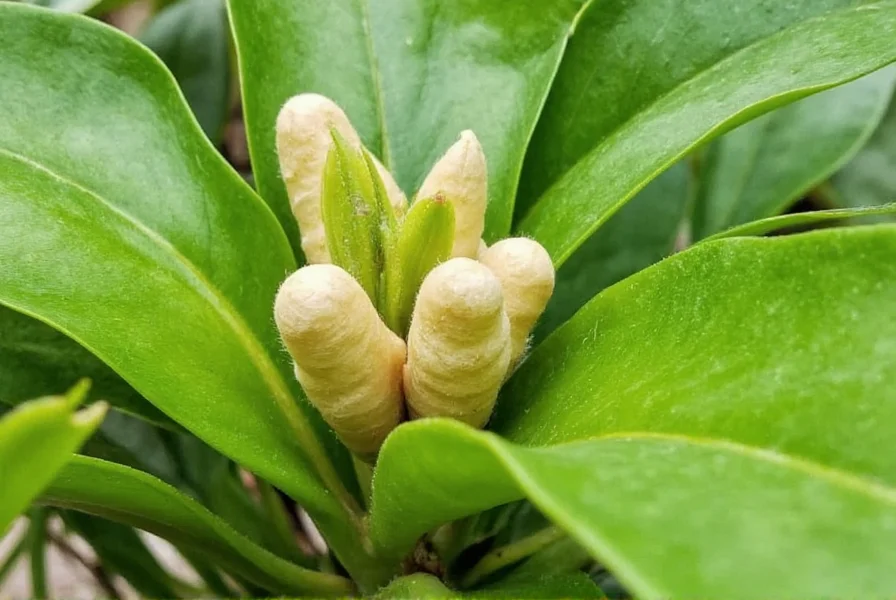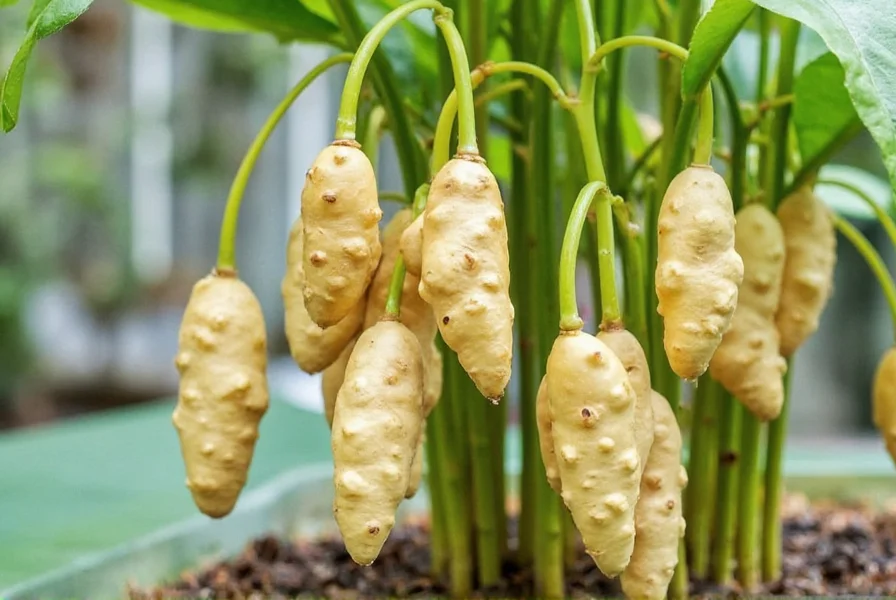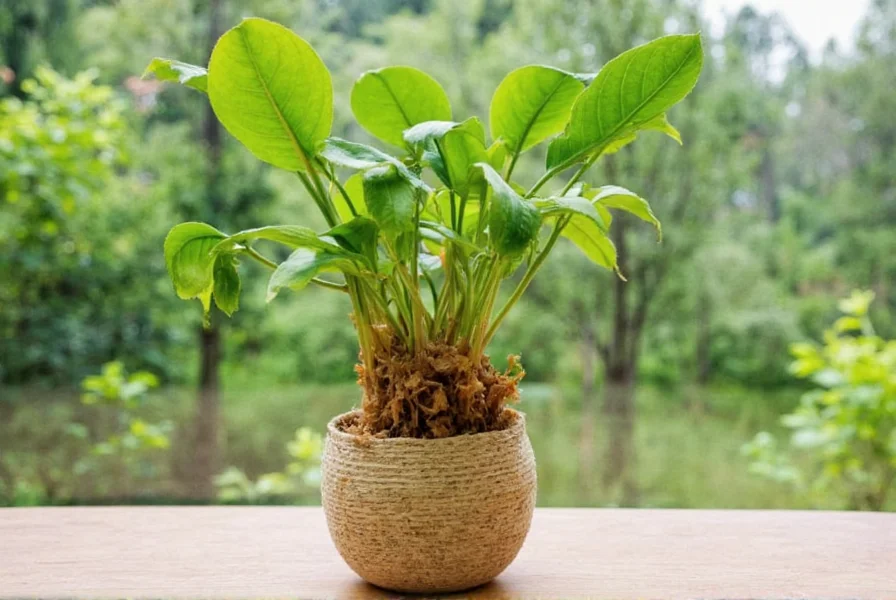Ginger root plants offer both culinary and ornamental value, producing aromatic rhizomes used worldwide in cooking and traditional remedies. This tropical perennial belongs to the Zingiberaceae family, sharing botanical relations with turmeric and cardamom. Unlike many garden plants, what we commonly call “ginger root” is actually a rhizome—a horizontal underground stem that stores nutrients and produces new shoots.
Understanding Ginger Root Plant Biology
Ginger (Zingiber officinale) grows as a herbaceous perennial reaching 2-4 feet in height under optimal conditions. The plant features narrow green leaves arranged in two rows along reed-like stems, with yellow-green flowers appearing in cone-shaped clusters. The valuable part for harvest—the rhizome—develops underground as a branching network of fleshy stems with a characteristic spicy aroma.
Native to Southeast Asia, ginger evolved in forest understory environments, explaining its preference for dappled sunlight rather than direct sun exposure. This adaptation makes it particularly suitable for container gardening in temperate climates, where gardeners can control light exposure and move plants indoors during colder months.
Optimal Growing Conditions for Ginger Root Plants
Successful ginger cultivation depends on replicating its natural tropical environment. The ideal temperature range for ginger root plant care instructions spans 71-86°F (22-30°C), with protection from temperatures below 50°F (10°C). While mature plants tolerate partial shade, young shoots benefit from filtered sunlight during their first few months.
| Growing Factor | Optimal Range | Notes |
|---|---|---|
| Soil pH | 5.5-6.5 | Slightly acidic conditions promote nutrient absorption |
| Soil Composition | Loamy with high organic matter | Mix garden soil with compost and perlite for best soil for ginger root cultivation |
| Watering Frequency | Keep consistently moist | Reduce watering before harvest; avoid waterlogging |
| Growth Duration | 8-10 months | For full-sized rhizomes; can harvest younger “green ginger” earlier |
Step-by-Step Ginger Root Planting Guide
Starting your ginger root plant at home requires minimal equipment but careful attention to detail:
- Source quality rhizomes: Select plump, firm pieces with multiple “eyes” (growth buds) from organic grocery stores or nurseries. Non-organic ginger may be treated with growth inhibitors.
- Prepare planting medium: Create a mix of equal parts potting soil, compost, and perlite for optimal drainage—critical for preventing rhizome rot in organic ginger root cultivation methods.
- Planting technique: Place rhizome sections horizontally 2-4 inches deep with eyes facing upward. Space multiple sections 8-10 inches apart.
- Initial watering: Moisten soil thoroughly after planting, then maintain consistent moisture without saturation during the 3-6 week sprouting period.
- Light management: Position in bright, indirect light. Direct sun can scorch young shoots, while insufficient light produces weak growth.

Essential Care Practices for Healthy Ginger Plants
Proper maintenance ensures robust rhizome development for your ginger root plant care instructions. During active growth (spring through summer), apply a balanced liquid fertilizer every 4-6 weeks. Reduce feeding as growth slows in fall. The most common mistake in ginger root plant watering requirements is overwatering—maintain moist but never soggy soil, as ginger rhizomes rot easily in standing water.
Container-grown plants need repotting every 1-2 years when rhizomes fill the pot. When transplanting, separate healthy sections for propagation while discarding any soft or moldy portions. In regions with frost, bring containers indoors before temperatures drop below 50°F (10°C), placing them in a warm location with bright, indirect light.
Harvesting and Preserving Your Ginger Crop
Determining when to harvest ginger root depends on your intended use. For mature rhizomes with maximum flavor and storage potential, wait until the plant's leaves yellow and die back naturally—typically 8-10 months after planting. For “green ginger” with milder flavor and thinner skin, harvest after 4-6 months when shoots reach 6-8 inches tall.
To harvest, carefully dig around the plant's base and lift the entire rhizome cluster. Brush off excess soil (avoid washing) and cure in a shaded, well-ventilated area for 2-3 days. For long-term storage, place in a paper bag in the refrigerator's crisper drawer, where properly stored ginger maintains quality for 3-4 weeks. Alternatively, freeze peeled ginger in airtight containers for up to 6 months.

Troubleshooting Common Ginger Root Plant Problems
Gardeners following indoor ginger root growing tips may encounter several issues:
- Yellowing leaves: Usually indicates overwatering. Allow top inch of soil to dry between waterings and ensure proper drainage.
- Stunted growth: Often caused by insufficient warmth or nutrients. Maintain temperatures above 70°F (21°C) and apply balanced fertilizer during growing season.
- Rhizome rot: Results from waterlogged soil. Use well-draining mix and reduce watering frequency, especially in cooler temperatures.
- Pale, weak shoots: Sign of inadequate light. Move to brighter location with indirect sunlight.
- Leaf spot diseases: Improve air circulation and avoid overhead watering to prevent fungal issues in humid environments.
Ginger Varieties for Home Gardeners
While common grocery store ginger (Zingiber officinale) works well for how to grow ginger root plant at home projects, specialized varieties offer unique characteristics:
- African ginger: Features bright red rhizomes with intense heat, excellent for medicinal preparations
- Bengal ginger: The most widely cultivated variety, known for balanced flavor and reliable yields
- Japanese ginger (Shokyo): Smaller rhizomes with milder flavor, ideal for pickling and young harvests
- Black ginger (Kampot): Rare variety with purple-tinged skin and distinctive floral notes
- Shell ginger: Primarily ornamental with striking pink flower cones, though rhizomes are edible
Practical Applications of Home-Grown Ginger
Freshly harvested ginger surpasses store-bought in both flavor intensity and nutritional value. Culinary uses include:
- Grating into stir-fries, soups, and sauces for immediate flavor impact
- Creating homemade ginger tea by steeping thin slices in hot water
- Preparing ginger syrup for cocktails, baking, or preserving
- Adding to fermented foods like kimchi or sauerkraut for complexity
- Blending into smoothies for digestive benefits
When using homegrown ginger in traditional preparations, remember that fresh rhizomes contain higher moisture content than dried ginger powder—typically requiring a 3:1 substitution ratio (3 parts fresh for 1 part dried).
Frequently Asked Questions
Can I grow ginger root plant from grocery store ginger?
Yes, you can grow ginger root plant from grocery store ginger, though organic varieties work best as non-organic ginger may be treated with growth inhibitors. Select plump pieces with multiple visible growth buds (eyes), soak in water for a few hours to encourage sprouting, then plant horizontally 2-4 inches deep in well-draining soil with the eyes facing up. Keep the soil consistently moist and provide warm temperatures (70-85°F) for successful germination.
How long does it take for ginger root plant to mature?
Ginger root plants typically require 8-10 months to reach full maturity for harvesting. You'll know ginger is ready when the leaves turn yellow and begin to die back naturally. For younger “green ginger” with milder flavor, you can harvest after 4-6 months when the shoots reach 6-8 inches tall. The growth period may extend in cooler climates or with less-than-ideal growing conditions.
What's the best way to store harvested ginger root?
The best way to store harvested ginger root is to cure it first by air-drying in a shaded, well-ventilated area for 2-3 days. Then store in a paper bag in the refrigerator's crisper drawer, where it will maintain quality for 3-4 weeks. For longer storage, freeze peeled ginger in airtight containers (up to 6 months) or preserve in vinegar or honey. Avoid washing ginger before storage, as excess moisture promotes mold growth.
Why are my ginger plant leaves turning yellow?
Yellowing ginger plant leaves typically indicate overwatering, which is the most common issue in ginger root plant care. Ginger rhizomes require consistently moist but never soggy soil—excess water leads to root rot and yellow foliage. Allow the top inch of soil to dry slightly between waterings, ensure proper drainage in your container or garden bed, and check for signs of root rot. Yellowing can also occur naturally as the plant matures and prepares for harvest.
Can ginger root plants grow indoors successfully?
Yes, ginger root plants can grow indoors successfully with proper conditions. Use a wide container (at least 12 inches deep) with excellent drainage, place in bright indirect light (east or north-facing windows work well), and maintain warm temperatures (70-85°F). Indoor ginger requires consistent humidity—mist leaves regularly or use a humidity tray. Water when the top inch of soil feels dry, and fertilize monthly during the growing season. Indoor plants may grow slower than outdoor plants but can still produce harvestable rhizomes in 8-10 months.











 浙公网安备
33010002000092号
浙公网安备
33010002000092号 浙B2-20120091-4
浙B2-20120091-4